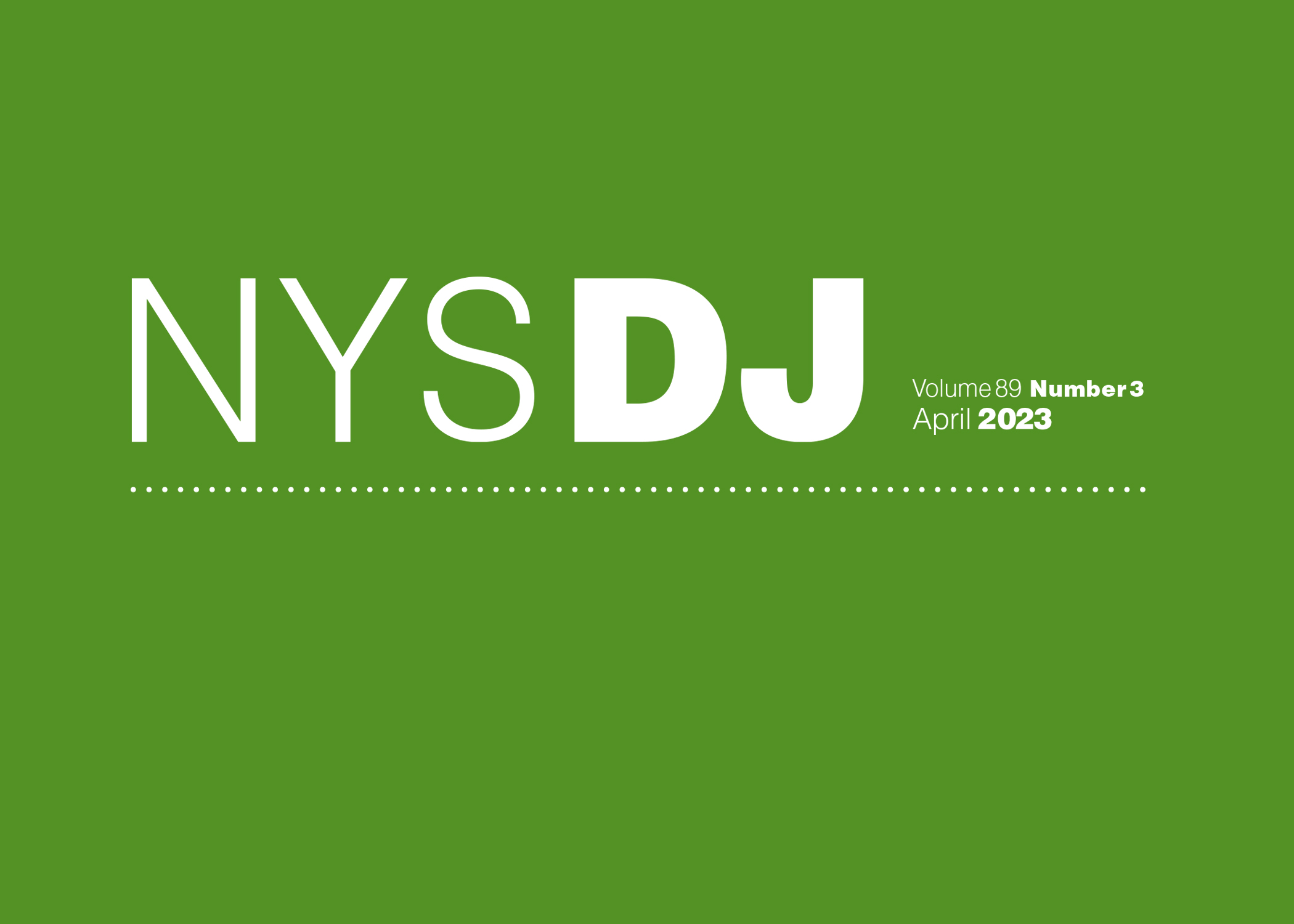
20 minute read
A Dentist’s Role in the Delivery of Culturally Competent Oral Healthcare to Transgender Patients
A Dentist’s Role in the Delivery of Culturally Competent Oral Healthcare to Transgender Patients
Laura Rhein, D.D.S.; Michael J. Mand, D.D.S.; Benjamin Solomowitz, D.M.D.
ABSTRACT
Professionals across all healthcare fields understand the importance of delivering patient-centered care. But delivering such care requires knowledge of various patient populations, especially marginalized groups of individuals. Rendering non-biased, non-prejudicial care to marginalized populations is irrefutably critical. It requires understanding the specific needs of these at-risk individuals. The transgender community is one marginalized population that faces inequities in healthcare. This article examines current literature to reveal the inequities that the transgender population encounter in dental care. And it explores the dentist’s role in the delivery of culturally competent care to transgender patients.
The ability of healthcare providers to deliver competent care and formulate optimal treatment plans for their patients depends upon a multidisciplinary, patient-centered approach. Healthcare professionals have a responsibility to render non-biased, nonprejudicial care to all patients and to provide care that addresses the specific needs of all patients.[1]
While this is a reasonable objective, the treatment of “all patients” comes with challenges, as there are significant differences between patients when viewed at population, community and individual levels. Rendering non-biased, non-prejudicial care to marginalized populations is imperative, and understanding the specific needs of these at-risk populations is the hallmark of patient-centered care. All healthcare professionals need to be aware of and be able to address barriers to healthcare that are commonly experienced by marginalized populations.
Furthermore, a dentist’s ability to provide competent care involves the combination of a thorough clinical and radiographic examination to gather a patient’s current oral health status and consideration of a patient’s medical, social and dental history.
One specific marginalized group healthcare professionals need to understand better is the transgender community. There are approximately 1.4 million transgender adults in the U.S., 0.6% of the population.[1] Understanding exactly what it means for a given person to identify as transgender is essential. Defining transgender often necessitates reviewing the meaning of the terms sex and gender.[1] Gender identity is psychological and refers to a person’s inherent sense of being a man or a woman.[2] The binary categories for gender identity are man and woman, while a third category is recognized as genderqueer or transgender.[2]
Previous literature, media outlets and legislative initiatives have consistently shed light on the inequities faced by the transgender community. Published literature has identified the transgender community as being at greater risk of stigmatization, discrimination, violence, anxiety, depression, suicide, unemployment, high-risk behaviors, sexually transmitted infections and substance abuse.[1] Transgender individuals have identified a lack of health insurance, denial of treatment and claims due to being transgender, and financial hardship as common barriers to healthcare.[3] High rates of unemployment in this population further exacerbate difficulties in obtaining health insurance.[3]
Fear of stigmatization and discrimination is a commonly reported barrier to care.[1] Discrimination against the transgender community includes behaviors such as assuming a person’s assigned sex at birth is fully aligned with that person’s gender identity, not using a person’s preferred name or pronoun, and making the assumption that psychopathology exists given a specific gender identity or gender expression.[2] Literature has also shed light on the fact that these increased risk factors and barriers to access to healthcare negatively affect the overall health and well-being of trans individuals.[1]
The current literature examining the health of transgender individuals is limited. Furthermore, the data that is available is often from small studies of convenience samples, such as participant recruitment from clinics, rather than population-based samples.[4] However, the health implications among the transgender community are especially unique and important, since medical gender transitioning is often explored by these individuals.

Four main forms of interventions exist in gender transition therapy.[5] One option includes changes in social expression of gender to achieve consistency with gender identity. A second option is to undergo therapy with cross-sex hormones to achieve desired masculinization to feminization. A third, more invasive and risky option, is surgical intervention involving the surgical change of the genitalia and/or other sex characteristics. The final form of intervention pertains to the use of psychotherapy to further explore gender identity, improve body image and promote resilience.[5]
The risks associated with cross-sex hormone therapy have been explored in previous literature. Estrogen-progestin hormones have been found to be associated with thromboembolic disease, while testosterone has been found to be associated with an increase in liver enzyme levels, loss of bone mineral density and an increased risk for ovarian cancer.[6] Despite there being drastic differences between these intervention options, and their associated risks, they all share a similar objective. The goal of psychotherapeutic, endocrine or surgical therapy is to enable the patient to achieve lasting personal comfort with the gendered self in order to maximize overall well-being.[5]
Because the transgender population faces significant inequities and barriers to accessing healthcare, this article aims to discuss the topic of transgenderism in the context of dental care. Its purpose is to explore the role of the dentist in the culturally competent care of transgender patients. A search of current published literature was conducted in order to explore barriers to dental care, and the oral health implications and treatment considerations of transgender patients. Furthermore, this article seeks to determine if the dental education and residency training curricula currently in place are adequate to treat this population.
Methods
A comprehensive search of the current literature was undertaken to find evidence-based data and carry out the objective of this study. Using the database PubMed, a search was conducted using keywords such as “Transgender” and “Dentistry” or “Dental” or “Oral Health.” Preference for full-text articles, as well as studies published in the English language, was inputted. Titles of articles were initially reviewed for relevance. Further review of abstracts was conducted to aid in the selection of articles that pertained to the transgender community and one of three main subtopics: barriers to dental care; oral health implications and treatment planning considerations; and dental education and training. Five articles were ultimately selected to be included in this review.
Results & Discussion
1: Barriers to Access Dental Care
Oral healthcare professionals are responsible for ensuring that transgender clients receive care that aligns with their needs.[1] To be able to provide culturally competent care to transgender patients, dentists must recognize the barriers to accessing dental care that transgender patients may face. The most often-cited barrier by the transgender community is related to their perception that their providers lack knowledge of and have pre-existing bias against transgender persons.[3]
A cross-sectional study published in 2017 aimed at evaluating the level of dental fear among transgender individuals and investigating specific predictors of dental fear in individuals who identify as transgender.[7] In their methodology, the authors conducted a web- and paper-based anonymous survey among transgender adults. In their questionnaire, they implemented the various pre-published survey questions to assess different criteria, such as dental fear through the Dental Fear Survey (DFS).[7] They also asked characteristic questions to gather information on patients’ sex, gender identity and many other features. Gender transition questions that were previously published were adapted and utilized in this questionnaire.
Seventy individuals who identify as transgender completed the survey. Specifically, there were 36 transgender males who were assigned female at birth (AFAB) and 34 transgender females who were assigned male at birth (AMAB). Statistical analyses were performed with a significance level of 5%.[7] All combinations of the fear of maltreatment in a dental clinic with DFS scores and subscales indicated a significant positive relationship, with p values ranging from p=0.014 to <0.001. Furthermore, regression model analysis revealed that significant predictors of dental fear (DFS) are the fear of being maltreated in a dental clinic (p=0.017) and experience of maltreatment in a dental clinic (p=0.041). Therefore, individuals who had more fear of experiencing maltreatment in a dental clinic reported significantly higher dental fear.[7]
2. Oral Health Implications & Treatment Plan Considerations
Oral healthcare professionals are responsible for ensuring that transgender clients receive care in a culturally competent manner.[1] This requires an understanding of the basics of gender nonconformance and its impact on oral-systemic health.[1] Dental practitioners must understand the effects of relevant medical history or medication use on dental care and screen effectively for oral infections and diseases for which parts of the transgender population may be at higher risk.[8] These include oral lesions that result from STIs, as well as oral complications of other health disparities, such as decreased healthcare usage and increased substance abuse.[8]
Because recent evidence suggests that, when compared to their cisgender counterparts, transgender youth exhibit more unsafe sexual behavior that may elevate their risk for sexually transmitted infections, a 2020 study aimed to better understand oral sex knowledge and experience of transgender youth.[9] Specifically, the authors sought to explore the knowledge that transgender youth have regarding oral sex, the consequences of oral sex, the mechanisms of protection and where they obtained this information.[9] The study took place at a U.S. academic pediatric medical center in 2017, and participants were recruited at a Transgender Research Day event and during Transgender Clinic sessions. The participants in this study included English-speaking transgender adolescents 14 to 24 years old, who were invited to participate in a previously validated survey about their knowledge and behaviors related to oral sex.
Of the 138 transgender youth invited to participate, 57 completed the surveys, yielding a 41% response rate. A majority of the respondents reported feeling they understood the necessity of protection and consequences of oral sex; however, most participants reported not using a form of protection.[9] Over half of the participants (58%) said they had not had a physician, dentist or parent speak to them about oral sex.[9] The 2020 study examining oral sex knowledge and experience of transgender revealed the lack of standardized, evidence-based sex education provided to at-risk youth populations, in particular, transgender youth.[9] The authors concluded that it is imperative that adolescents, particularly in highly vulnerable populations like transgender youth, receive accurate information about oral sexual contact.[9] Dental schools should prepare future practitioners to address these issues with youth using a culturally competent, evidence-based approach.[9]
The long-term effects of hormone treatment on mineral density, bone metabolism and bone resorption are not well understood. In men, testosterone plays a vital function for skeletal equilibrium, and estradiol is required for skeletal development.[10] Whereas, in women, estrogens participate in bone homeostasis; the effect of androgens is less clear. This insinuates that bone metabolism may differ between transgender men and transgender women undergoing hormone therapy.
During hormone therapy, bone changes are evaluated periodically through the analysis of bone mineral density (BMD) and bone turnover marker (BTM). Bone mineral density (BMD) analysis involves the use of dualenergy X-ray absorptiometry (DEXD), which represents active bone remodeling. Bone turn over marker (BTM) analysis is done using a sample of serum and/or urine.[11] Monitoring of these values allows for the prediction of the risk of osteoporosis, and observation of treatment progression, as changes in values reflect the effects of the therapy on bone metabolism and structure.
The long-term effects of hormone therapy on transgender individuals have not been fully explored, thus Delgado-Ruiz et al [11] suggest that it may hinder osteointegration of titanium implants. Therefore, the purpose of their 2019 systematic review and meta-analysis was to evaluate the bone markers and BMD of transwomen (male to female) and transmen (female to men) patients after long-term pharmacotherapy treatment for feminization or virilization with or without sex reassignment surgery.
Furthermore, the researchers aim to provide a theoretical basis for a better understanding of the implications of long-term pharmacologic therapy in the adult transgender patient on therapies involving dental implants.[11] For their methodology, they follow the PRISMA guidelines and examine three primary outcomes: changes in bone metabolism marker levels (calcium, phosphate, alkaline phosphatase and osteocalcin); changes in the BTMs (serum procollagen Type I N-terminal pro-peptide (PINP) [bone formation], and serum collagen Type I cross-linked C-telopeptide (CTX) [bone resorption]); and changes in BMD. The results of their systematic review revealed that calcium, phosphate, alkaline phosphatase, and osteocalcin levels remained stable across transgender patients undergoing hormone therapy. PINP increased in both transwomen and transmen; however, CTX showed contradictory values in transwomen and transmen. The results also revealed a reduced BMD in transwomen patients receiving long-term crosssex pharmacotherapy.
Due to many limitations in the study, the researchers describe only three conclusions of their study. First, long-term pharmacotherapy for transgender patients does not alter the calcium, phosphate, alkaline phosphatase and osteocalcin bone markers. Secondly, long-term pharmacotherapy for transgender patients will slightly increase the bone formation, expressed with increased PINP turnover markers. Finally, the authors conclude that long-term cross-sex pharmacotherapy for maleto-female transgender patients will produce a slight reduction in bone mineral density (BMD).
Despite their research objective, the results of the systematic review did not allow for the researchers to make any formal conclusions about the contraindications of implant surgery in transgender patients taking hormone therapy. Instead, the researchers recommended that dentists or oral surgeons planning to place implants in transgender female patients taking cross-sex hormone therapy may consider the precautions followed in osteoporotic patients. Similarly, Delgado-Ruiz et al[11] suggest that it would be reasonable to monitor bone parameters in these patients before pursuing dental implant surgery
3. Dental Education & Training
As of 2017, few studies have examined healthcare trainees’ perceptions of their preparedness to care for LGBTQ populations, and no studies have compared perceptions of training across medicine, dental medicine and nursing.[8] A 2018 study aimed to understand variations across disciplines in LGBTQ health by assessing medical, dental and nursing students’ perceptions of preparedness across three domains: comfort levels, attitudes and formal training.[8] The researchers developed a 12-item survey with an interprofessional panel of LGBTQ students from the schools of medicine, dental medicine and nursing at the University of Pennsylvania, located in Philadelphia, PA.[8] Any student enrolled full time in any of the three schools was eligible to participate in the survey.
The researchers performed descriptive statistical analyses and examined patterns in responses using Kruskal-Wallis tests and an ordered logistic regression model. One thousand ten students from the schools of medicine, dental medicine and nursing responded to the survey, yielding a 43% response rate. Extensive statistical analyses were conducted.
TABLE 1.

Data Results from Comparing Medical, Dental and Nursing Students’ Preparedness to Address Lesbian, Gay, Bisexual, Transgender and Queer Health.[8]
Comparing the comfort levels, attitudes and formal training of dental students versus medical and nursing students yielded statistically significant differences (Table 1). Significantly fewer dental students (52%, n = 63) agreed that they felt comfortable discussing sexual health than medical (79%, n = 388) and nursing students (76%, n= 295). Significantly fewer dental students (25%, n = 32) agreed that their instructors demonstrated competence compared to medical (46%, n = 227) and nursing students (59%, n = 227). Additionally, only 13% (n = 16) of dental students agreed that their curriculum had incorporated LGBTQrelated content compared to 58% (n = 287) and 55% (n = 215) of medical and nursing students, respectively.[8]
The results of the study also reveal that dental students were significantly less likely than medical students to report an interest in receiving formal LGBTQ health education (OR 0.53, p<0.01). The researchers conclude that dental students displayed slightly fewer positive and more stereotypical attitudes towards LGBTQ populations and had fewer positive perceptions of their formal training in LGBTQ health. The authors suggest a possible explanation for these findings is a more significant gap in LGBTQ health content and instructor competency in dental school compared to that of medical and nursing schools.[8]
With an increasing number of transgender individuals seeking gender-affirming surgery, there is a greater need for healthcare providers, including oral and maxillofacial surgeons (OMFS), experienced in the surgical care of transgender patients.[12] In their 2019 study, Ludwig et al[12] aimed to evaluate OMS residents’ exposure to the care of transgender individuals, as well as their perceived importance of training in gender-affirming surgery. A cross-sectional study was conducted between July 1, 2017, and July 30, 2018; all 1,174 OMS residents in accredited U.S. training programs were invited to participate. The predictor variables used in this study included: residents’ gender, program type, program region and level of training. The outcome variables used in this study included: frequency of exposure to the care of transgender people, aspects of care covered, perceived importance of such training and perceived need for fellowship opportunities in gender-affirming surgery.
The results yielded a 7.4% response rate, with a total of 87 responses. Demographic data was assessed; 81.6% of the 87 respondents were male, while 64.4% were training in combined MD degree-OMS certificate programs. Thirty-one percent of the participants reported having had previous exposure to the care of transgender people during their residency, thus 69% had not had any previous exposure.
A scale from 1=neutral to 3=very important was utilized to examine the OMS residents’ perceived importance of surgical training in gender-affirming surgeries; the respondents’ mean importance of receiving training in gender-affirming surgery was 1.37±0.94. Additionally, 37.9% of the respondents reported that fellowship training should be offered in gender-affirming surgery, specifically, in facial feminization and facial masculinization surgeries. Thus, the authors conclude that despite the fact that OMS residents had had limited exposure to the care of transgender people, they did perceive that such exposure should be a component of their training.[12] Further research is needed to collect data from a larger sample size and to better understand the role of oral and maxillofacial surgeons in gender-affirmation surgery.[12]
Conclusions
The treatment of the transgender population with respect and nonjudgement is important at all levels of healthcare. The results of this review emphasize the important role dentists play in the delivery of culturally competent care to a transgender patient. Patient-reported fear of discrimination and previous experiences of discrimination and maltreatment are significant, with a positive association with the level of patient dental fear.[7] Educating practitioners to recognize this population’s vulnerability to discrimination and reported increased dental fear will allow dentists to be more mindful in their assessment of a transgender patient’s anxiety and fear, and to utilize strategies to promote feelings of comfort and security in patients under their care.
In comparison to medical and nursing students, dental students display slightly fewer positive and more stereotypical attitudes towards LGBTQ populations and have fewer positive perceptions of their formal training in LGBTQ health. Dental schools should develop formal content on LGBTQ health and utilize this content as an opportunity for interprofessional training.[8] More comprehensive, formal training in the care of transgender patients would help overcome discrimination by ensuring that the dentist does not assume a person’s assigned sex at birth coincides with that person’s gender identity and uses a person’s preferred name or pronoun.[2]
It is important that dentists be able to elicit relevant information from their patients by asking appropriate questions and speaking knowledgably about sexual health with all patients.[8] This is especially important for transgender youth, as this population is more likely to engage in high-risk behaviors and contract sexually transmitted infections.[9] Allowing for more thorough education and tailored training to treat this population will help dentists provide quality treatment to transgender patients, treatment that makes them feel respected, understood and cared for.
The results of the 2019 study examining OMS residents’ experience with transgender patients and perceptions of genderaffirmation education showed that the OMS residents had had limited exposure to the care of transgender people.[12] Yet, OMS residents perceived that such exposure to the care of transgender patients should be an important component of their training, with over one-third of OMS residents saying fellowship training in facial feminization and masculinization gender-affirmation surgeries should be offered. Of course, this should be limited to procedures within the scope of the practice of dentistry set by state laws.[12]
Adding such advanced surgical training for a group that represents 0.6% of the US population into crowded curricula with limited resources and time has potential impacts, however. Potentially, this could lead to lessening the exposure of training in other critical surgeries, such as trauma repair, that are necessary for these residents to deliver in hospital settings more commonly in the years following their training. Additionally, due to the small transgender population, offering such training in facial feminization and masculinization may be limited depending on the region where care is being provided. Thus, further fellowship training in this category for a more selective group of residents that plan to carry this surgical skillset in their career practice may be preferred. With limited data on transgender health in general, and specifically regarding oral health, further research is needed. Research on oral health effects of gender-transitioning medications needs to be further explored to identify contraindications to any dental or oral surgery treatment. Continuation of research in this field, and curricula changes to incorporate more formal training on the LGBTQ community, especially the transgender community, will aid in the education and training of dental students into dental practitioners who will be able to treat transgender patients effectively with cultural competence and without stigma or discrimination.
Queries about this article can be sent to Dr. Solomowitz at bsolomow@jhmc.org.
REFERENCES
1. Macri D, Wolfe K. My preferred pronoun is she: Understanding transgender identity and oral health care needs. Can J Dent Hyg 2019;53(2):110-117.
2. American Psychological Association Guidelines for psychological practice with transgender and gender nonconforming people. Am Psychol 2015;70(9):832–864.
3. Hughto JMW, Reisner SL, Pachankis JE. Transgender stigma and health: a critical review of stigma determinants, mechanisms, and interventions. Soc Sci Med 2015 Dec;147:222–231.
4. MacCarthy S, Reisner SL, Nunn A, et al. The time is now: attention increases to transgender health in the United States but scientific knowledge gaps remain. LGBT Health 2015;2(4):287-91.
5. Mackinlay-Byrne L. Caring for the transgender patient. Dimensions of Dental Hygiene 2020;18(1):40–43.
6. Russell S, More F. Addressing health disparities via coordination of care and interprofessional education: lesbian, gay, bisexual, and transgender health and oral health care. Dent Clin North Am 2016 Oct;60(4):891-906.
7. Heima M, Heaton LJ, Ng HH, Roccoforte EC. Dental fear among transgender individuals—a cross-sectional survey. Spec Care Dentist 2017;37(5):212-222.
8. Greene MZ, France K, Kreider EF, et al. Comparing medical, dental, and nursing students’ preparedness to address lesbian, gay, bisexual, transgender, and queer health. PLoS One 2018;13(9).
9. Macdonald DW, Grossoehme DH, Mazzola A, et al. Oral sex knowledge and experience of transgender youth: an opportunity for dental education. J Dent Educ 2020 Apr;84(4):473477.
10. Vandenput L, Ohlsson C. Estrogens as regulators of bone health in men. Nat Rev Endocrinol 2009;5:437–443.
11. Delgado-Ruiz R, Swanson P, Romanos G. Systematic review of the long-term effects of transgender hormone therapy on bone markers and bone mineral density and their potential effects in implant therapy. J Clin Med 2019;8(6):784.
12. Ludwig DC, Dodson TB, Morrison SD. U.S. oral and maxillofacial residents’ experience with transgender people and perceptions of gender-affirmation education: a national survey. J Dent Educ 2019 Jan;83(1):103-111.

Dr. Rhein
Laura Rhein, D.D.S., is a former resident, Jamaica Hospital Medical Center, New York, NY. She practices general dentistry in New York City and Connecticut.

Dr. Solomowitz
Benjamin Solomowitz, D.M.D., is director, General Practice Residency Program, Department Dental Medicine, Jamaica Hospital Medical Center, New York, NY, and a dentist anesthesiologist.

Dr. Mand
Michael J. Mand, D.D.S., is an attending dentist in the General Practice Residency Program in the Department of Dental Medicine at Jamaica Hospital Medical Center, New York, NY, and practices general dentistry in Brooklyn, NY.










